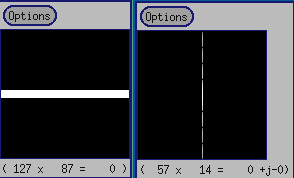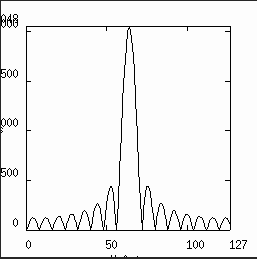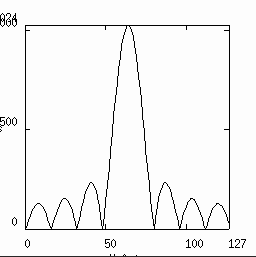The purpose of this experiment is to obtain a "visual feeling" of the relationship between pulse width in one domain and zero-crossings in the other. These concepts are intimately related to another very important one known as "bandwidth".
The two images displayed below depict a vertical rectangular image of fixed width and its log(mag+1) DFT spectrum.

The following two images depict a horizontal rectangular image of fixed height and its log(mag+1) DFT spectrum.

The images shown below depict a box image of fixed width and height, its log(mag+1) DFT spectrum, and its magnitude DFT spectrum. The height and width of the box image matches those of the other images.

NOTE: observe the relationship between width and/or height and the zero-crossings in the respective spectrums. Can we relate this to bandwidth?
In order to obtain a better understanding of the concepts we are here to explore, we can extract the horizontal spectrum line of the vertical image and plot it. Similarly, we can repeat the procedure with the horizontal image.
 --
--

NOTE: as the pulse width of a signal (image in our experiment) becomes narrower the zero-crossings become sparser and vice versa.
We can also interactively plot the spectrum of the box image.

We can also print the data to perform a similar analysis.